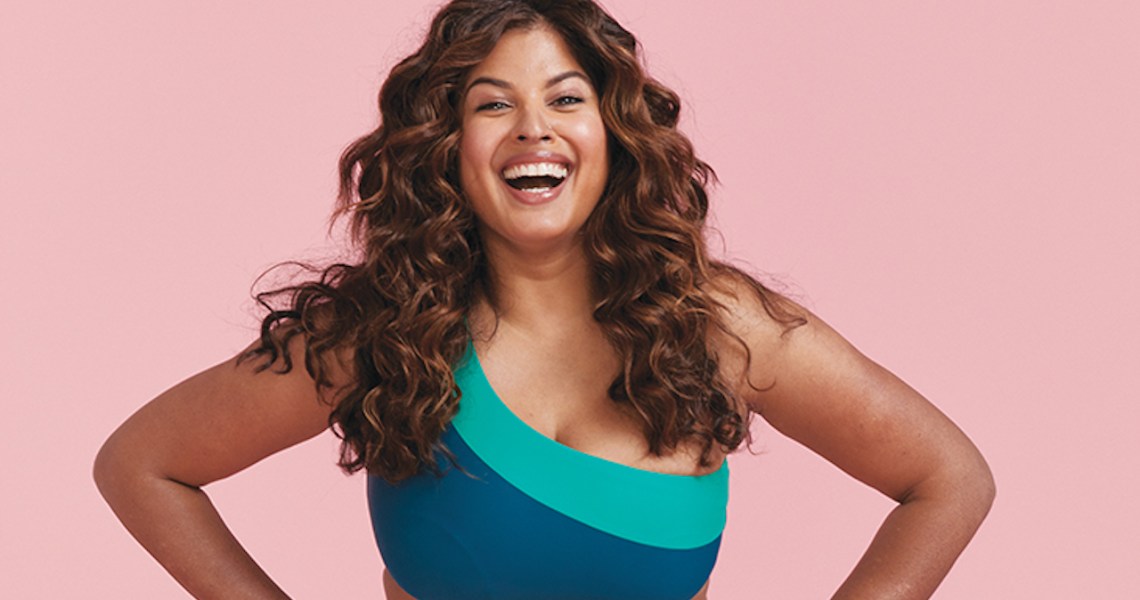In the last few years, brands promoting diversity and inclusivity through marketing campaigns has become the norm. It no longer feels revolutionary for a company to take this approach, and yet the strategy continues to prove effective for brands not only in gaining new customers but in driving sales.
Many younger digitally native brands from DTC swimwear company Summersalt to MeUndies are relying on inclusive marketing, filling ad campaigns with people of all sizes and backgrounds, to connect with consumers and ultimately grow their brands by boosting sales. And for many young companies, like Summersalt, this focus on inclusivity is paying off.
On June 17, Summersalt launched its “Every Body is a Beach Body” campaign, featuring 30 women of all ages, sizes and ethnicities. For Summersalt, a brand selling swimsuits up to a size 24, the decision to go all-in on an inclusive marketing campaign made perfect sense. From the beginning (the brand was founded in May 2017), Summersalt has championed body positivity and size inclusivity through its products. Moving into inclusive marketing was the logical next step.
Co-founder Reshma Chamberlin was inspired to feature these 30 women after realizing that, as an Indian woman, she had never seen someone like her represented in an ad campaign for swimwear. That made her want to showcase as many different types of women, from all walks of life, as possible.
“Thinking about representation and how important it is, and wanting to make more women feel joyful, we felt it was really important to make sure the brand showcased a variety of different women from all walks of life so everyone could see themselves reflected in these women for multiple reasons,” Chamberlin said.
Since the campaign launch, Summersalt has seen a major lift in its social media following and a big boost in sales. The brand declined to share specifics on sales lift.
A lot of these new-wave, digital-first brands are finding success here, including Glossier, MeUndies, and both Rihanna’s Fenty Beauty and Savage x Fenty brands. The drive is the idea that younger customers want to buy from brands that are inclusive and stand for something, said Ruth Bernstein, co-founder and CEO of Yard NYC.
Ad position: web_incontent_pos1
“At this point, it’s a cost of entry for [reaching] Gen Z. They’re the most diverse, accepting generation we’ve ever had. To them, any form of exclusion is off-putting,” said Bernstein.
For Glossier’s latest (and largest) ad campaign — spanning TV, email, digital and billboards — the company turned to its own employees and true fans of the brand to make the marketing feel more authentic and inclusive. Both Fenty brands have worked with women with diverse body types and of all ethnicities in their digital marketing, and the Savage X Fenty runway show mirrored that diversity. MeUndies also uses real customers in its marketing campaigns and recently rolled out a more inclusive sizing structure for its underwear.
Young brands like MeUndies have the luxury of being so new to the market they don’t have a history of non-exclusionary behavior, like a Victoria’s Secret.
“Older players in the underwear space have been pushing unattainable images of perfection in their advertising for so long that it now feels disingenuous when they run campaigns to capitalize on what they see as a marketing trend. Their true colors have been showing for years, whereas we came into the game relentlessly pushing to change the status quo by empowering the individual,” said Greg Fass, senior brand manager at MeUndies.
And all brands need to be wary of simply hopping on a trend.
Ad position: web_incontent_pos2
“With inclusive marketing, you have to make sure you’re making choices that are right for your brand. Are you jumping on a bandwagon just because it seems like the thing to do? Or are you authentically opening the aperture? We’ve seen the backlash brands face when they go rainbow for Pride but don’t have any real connection to the cause,” said Bernstein.
While the conversation around inclusive marketing is a worthy one for brands to be having now, it’s only a matter of time until the hype around it fizzles out, Bernstein said.
“Inclusivity on its own isn’t a marker of braveness anymore, and that’s a good thing,” she said. “It means we’re shifting the norm enough that, hopefully, 10 years from now, it won’t be a conversation anymore. As Gen Z continues to grow as a key consumer, we’ll be watching them to see how the conversation around inclusivity continues to evolve.”
There can also be negative ramifications for brands that double down on inclusive marketing if the messages being advertised don’t match up with how the company operates behind the scenes, said Nomi Leasure, account manager at creative agency Optimist.
In September, DTC bra company ThirdLove came under fire after The Goods by Vox published allegations from 10 current and former employees of a toxic company culture, driven in part by the brand’s co-CEO, David Spector (husband to co-founder and co-CEO Heidi Zak). The report from Vox said employees joined the company hoping to work in an inspiring, women-led work environment, the inclusive culture that was so heavily marketed by the brand, but instead were presented with a negative work culture, low salaries, limited benefits and little room to negotiate.
“You can say your business is built and run by and for women, but you need to have maternity-leave programs, health care that covers contraception, adequate family-leave policies, all these structural things on the business end that really signify that you mean what you say,” said Leasure. “We also have to be careful about what we present from a marketing stance, from a visual stance when we say “female empowerment,” because it’s risky. If you present just one idea of what female empowerment looks like, if we start to dictate female empowerment, we are putting women in a box again.”




